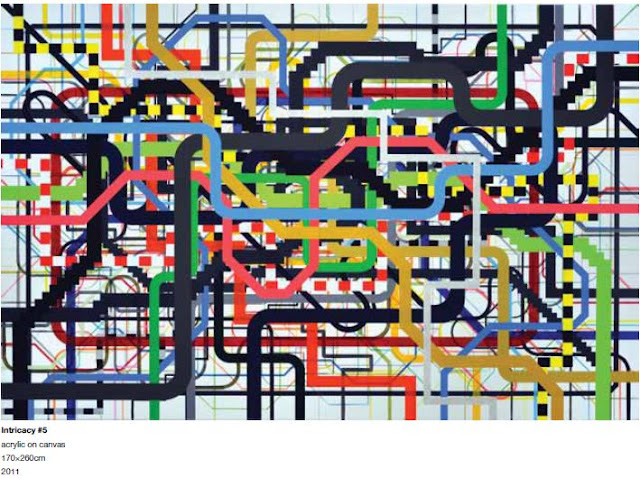Julien Coignet (France)

Education2000 - 2002 Ecole Nationale Supérieure des Beaux-Arts de Dijon, France2001 - 2002 Fachhochschule Mainz, Germany1997 - 2000 Ecole Nationale Supérieure des Beaux-Arts de Dijon, France2002 DNSEP (National art diploma)2000 DNAP (National art diploma)
Solo Exhibition2011 Haus Rheinland-Pfalz, Dijon, France
2010 King Gallery & Kubrick in the forrest, Seoul, Korea
2007 La Galerie, Talant, France
2006 Le Laboratoire, Vesoul, France
2004 Atheneum, Dijon, France
2003 Passeport pour l’Europe, Dijon, France
Selected Group Exhibition2011 The sociological imagination of the city, Seoul Art Space GEUMCHEON, South Korea
2011 From a distance, take a distance, Sungkok Art Museum, Seoul, Korea
2011 ART fresh, Seoul Art Space GEUMCHEON, Korea
2010 Distances, Cité Internationale des Arts, Paris, France
2008 Fictionnal Reality, Skape Gallery, Seoul, Korea
ResidencySelected publications, grants and residencies
2011 Seoul Art Space GEUMCHEON 2nd-term residency artist, Seoul, Korea
2010 Catalogue of the exhibition “Distances”
2009 grant for a studio, DRAC Franche-Comté
2005 Catalogue of the exhibition +-Dense
2005 Catalogue « L’art et la Ville », Jean Luc Chalumeau, édition Cercle d’Art
2004 Julien Coignet, Monography, ENSA Dijon & Atheneum
2003 grant for an project in Ireland, ENSA Dijon
 |
Internet island / 2006 / 400x360cm / media on wood panel
|
 |
| Tissage #05/ 2010/ 300x700cm/ wall installation with plastic threads |

|
| Dwelling/ 2009/ 320x480cm/ acrylic on wood pannel |
 |
| The continuous cities #15 SL (detail), Ink drawing on polyester, 150x150cm, 2011 |
 |
| The continuous cities #11 LDN, Ink drawing on polyester, 150x150cm, 2009 |
 |
Installation View at Seoul Art Space_ Geumcheon
Where Are We
Sim Somi(Curator of Gallery Skape)
Julien Coignet approaches various modern social issues in a structural way, based on the contemporary culture. The modern society has formed with direct relationship with urban structures and systems. To him, an active artist in Paris, France, Seoul is a sprawling city scrambling between destruction and creation, which is a different scenery compared to the European cities that are based in modernity. He shows the analysis of this kind of urban systems on the basis of his 6 months in Seoul through his four separate artworks that express the aspect of maximized life implied in the huge city.
The Continuous Cities is a continuous art work that has been worked on 1~2 pieces per year since 2004, and it is a representative work where the artist’s systematic viewpoint of examining the cityscape stands out. The art work that has been reconstructed by the artist through arbitrarily changing the map based on the actual map is a huge dessin consisting the shape of the structures and even detailed list of street names. This art work with Seoul as the subject matter is the 15th continuous piece following the major cities of Europe such as London, Paris, Berlin, Brussels, Poznan, and Vienna. The map of Seoul interpreted by him with not one but multiple zones, sprawling streets from tangled roads, and the form of residential area of various tendencies densely intermixed are highlighted in a different manner than other cities. The imagination of the artist that hang at the boundaries of reality and illusion not only reorganize the urban plan, movement of people, and form of housing, but also involve in detailed symbolic elements of the city.
The art work Assemblage #1 (Doksan) which was viewed in a regional context during the stay at Seoul Arts Space GEUMCHEON, is assembled scenery of rooftops in an assemblage form. The Doksan-dong buildings that he looked down from high-rise buildings become especially different from the upper portion and are revealed as a mixed scenery. This kind of conformed disorders reveal intermixing of separate social and cultural desires, rather than functional aesthetics that have been pursued in the existing monitors. He first divided them into small planes like pixels and reassembled them to express a giant pixel structure. The myriad of assembled pixel images within the scale of a huge city contain uncertainty as if they were to scatter away at any moment, but they also express endless desire to build at the same time.
Reminiscent of a subway map, the Intricacy#5 has a more abstract system approach to the structure of the society than the work mentioned before. The different colored lines are forming a single network through tangled and intersected relationship with each other and this kind of characteristic is associated to the tangled and complex structural system of the modern society. Another piece, theUnexpected Error, moves us to examine what kind of influences these social structures have on the lives of individuals. The error screen of a computer made into pixels contains a meaning of relatively extreme warning compared to the sensitive design of the external appearance. This kind of paralyzed state of the system incurs anxiety, agitation, and panic of individuals, and one can see this as the syndrome that essentially underlies the base of modern society. And he visually shows us the psychological context contained in the contemporary culture through the formal structure of the error screen and colors.
While the artist utilizes the different visual forms of dessin, visualization, abstraction, graphics, and design, he is connecting these elements from the dots of the map to the computer pixels and is plasticaly approaching the maximized contemporary aspect within post-modernity. The new artworks he made in Seoul makes us examine the flow and aspect of the huge system, especially city based physical/social/psychological structures that are affecting the modern people. Whether it is in the middle of a large city or on some suburban street, his question ‘Where are we (in this society)?’ will continue to tightly spread the aspect of individual lives through contemporary phenomenon and related visual structure.
|











